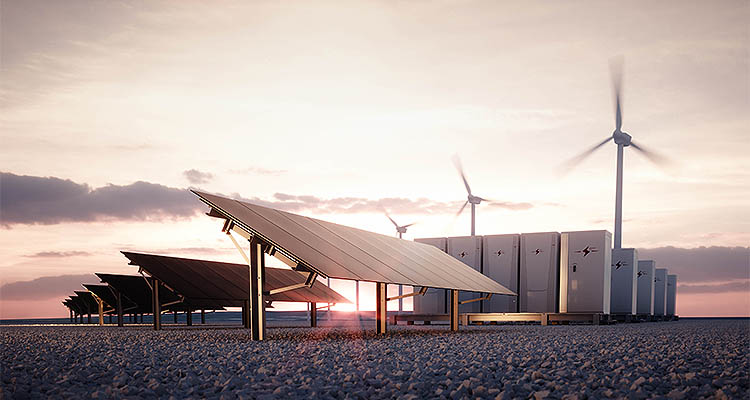How solar will bring about a new power era.
Evolution is unavoidable, whether it’s in biology, the economy, or technology. We must adapt to our changing environment or risk the consequences. Our energy system is no exception. Over the coming decades, tough decisions need to be made about how to evolve energy consumption. It will undoubtedly bring considerable challenges, such as how to balance supply and demand, but one that we must start to confront.
Globally, more than two-thirds of power comes from fossil fuels, highlighting the long road ahead before the world’s power is decarbonized. As we have observed in history, with energy sources declining to accommodate the emergence of new fuels, can renewables significantly decrease fossil fuel’s market share and become the dominant force in a new era of power generation?
Growth of solar PV
Energy transition is not new, we’ve been doing it for thousands of years, adjusting our energy mix until it represents what we know today. We will continue this

evolution by increasing wind and solar and decreasing natural gas, coal and oil to power our lives more sustainability. Thanks to modern technology, we can expect to see change happen faster than ever.
According to a report by Ember, solar capacity in Europe from 2019 to 2023 has more than doubled from 120GW to 257GW. In the next five years, renewable energy generation will continue to grow exponentially, with solar PV leading the way. According to the IEA’s Renewable 2023 report in 2028, solar energy will surpass wind electricity generation.
One benefit for investors is that the marginal cost of generating electricity from solar is basically zero, after the capital costs have been spent. Unlike gas or coal plants, there are no additional charges to source sunshine, meaning that even at very low electricity market prices, it is still profitable to generate renewable electricity. As more solar generators come online, the price of solar power will become considerably cheaper than fossil fuels, naturally reducing the demand for natural gas, and accelerating the rate of decommissioning gas and coal power plants over the next decade. In Europe, the demand for natural gas has continued to decrease, falling by 7.4 percent in 2023 from the previous year.
Solar price cannibalization
However, solar must overcome a major barrier. Over the past few years, the volatility of electricity market prices has increased, as more renewable generation came online, and local generators export surplus power to the grid. We’re already seeing growing periods in Europe where the wholesale price of electricity is either zero or negative. This is a phenomenon known as ‘solar price cannibalization’.
Typically, solar price cannibalization occurs during periods of high sunshine or low electricity demand, such as on Sundays or summer holidays but increasingly also during normal workdays. If electricity prices are zero or negative, any electricity exported to the market not locked into long-term fixed PPA contracts has no value. In the future, this could make generating profits more difficult, leading to an unsustainable renewable market. This phenomenon is already occurring more frequently in Europe. If it continues, it could disrupt solar’s growth trajectory. To maintain the reduction of energy generation from fossil fuels, we must find a solution.
The rapid deployment and low generation costs of solar PV make it a game-changer in the energy transition, as it can meet the energy needs of individual businesses and be deployed in large-scale projects. Market prices need to be advantageous to encourage continued investment, and price cannibalization could threaten solar power’s market position. To future-proof renewable generation assets, and protect against negative market prices, battery technology must be an essential part of every solar power system. Adding batteries means that the energy generated can be stored, used or sold later when prices are higher.
Market pricing
 To maintain a functional renewable energy market, it’s crucial to recognize that the typical current fixed pricing model for solar PV generation, such as fixed PPAs, will have to change and that fluctuating and above zero prices in the electricity market are essential. Market prices that remain positive allow investors to recoup their upfront capital costs and generate profits, ultimately incentivizing further investment in solar projects.
To maintain a functional renewable energy market, it’s crucial to recognize that the typical current fixed pricing model for solar PV generation, such as fixed PPAs, will have to change and that fluctuating and above zero prices in the electricity market are essential. Market prices that remain positive allow investors to recoup their upfront capital costs and generate profits, ultimately incentivizing further investment in solar projects.
Remunerating solar PV based on variable market pricing with a balance of localized and national storage would limit the volatile electricity market prices we’re seeing today. It would also allow solar power to turn a profit, compete with fossil fuels for power generation and fund the expansion of renewable energy infrastructure, leading to a point where solar power overtakes fossil fuels as the dominant energy source.
Gas’ final role
Over the next 25 years, renewable energy will play the leading role in the energy transition to phase out fossil fuels. The remaining question is, how much power from an alternative source – whether nuclear, gas or green hydrogen – is needed to support renewables during times of ‘dunkelflaute’, where there is limited wind and sun to generate power?
Although gas may play a small role in the future of energy, natural gas alongside CCUS is unlikely as it is too expensive, especially for a long-term solution. An analysis by Aurora Energy Research for Renewable UK found that bill-payers could save £68 a year by 2035 with an energy system dominated by offshore wind, as opposed to gas with or without carbon capture and storage. Whatever the final fuel mix looks like, by 2050, power generation will be driven by battery storage and renewable energy rather than low-carbon gas.
By Stephan Marty
For a list of the sources used in this article, please contact the editor.
Stephan Marty is CEO of Wattstor. Wattstor designs, builds, pays for, operates and optimizes onsite renewable energy systems, including renewable assets, battery storage and a powerful EMS. It works directly with commercial and industrial customers, their suppliers and utility partners, and with solar installers to 100 percent fund solar and battery project costs, so they get the electricity they generate at lower than grid cost.
